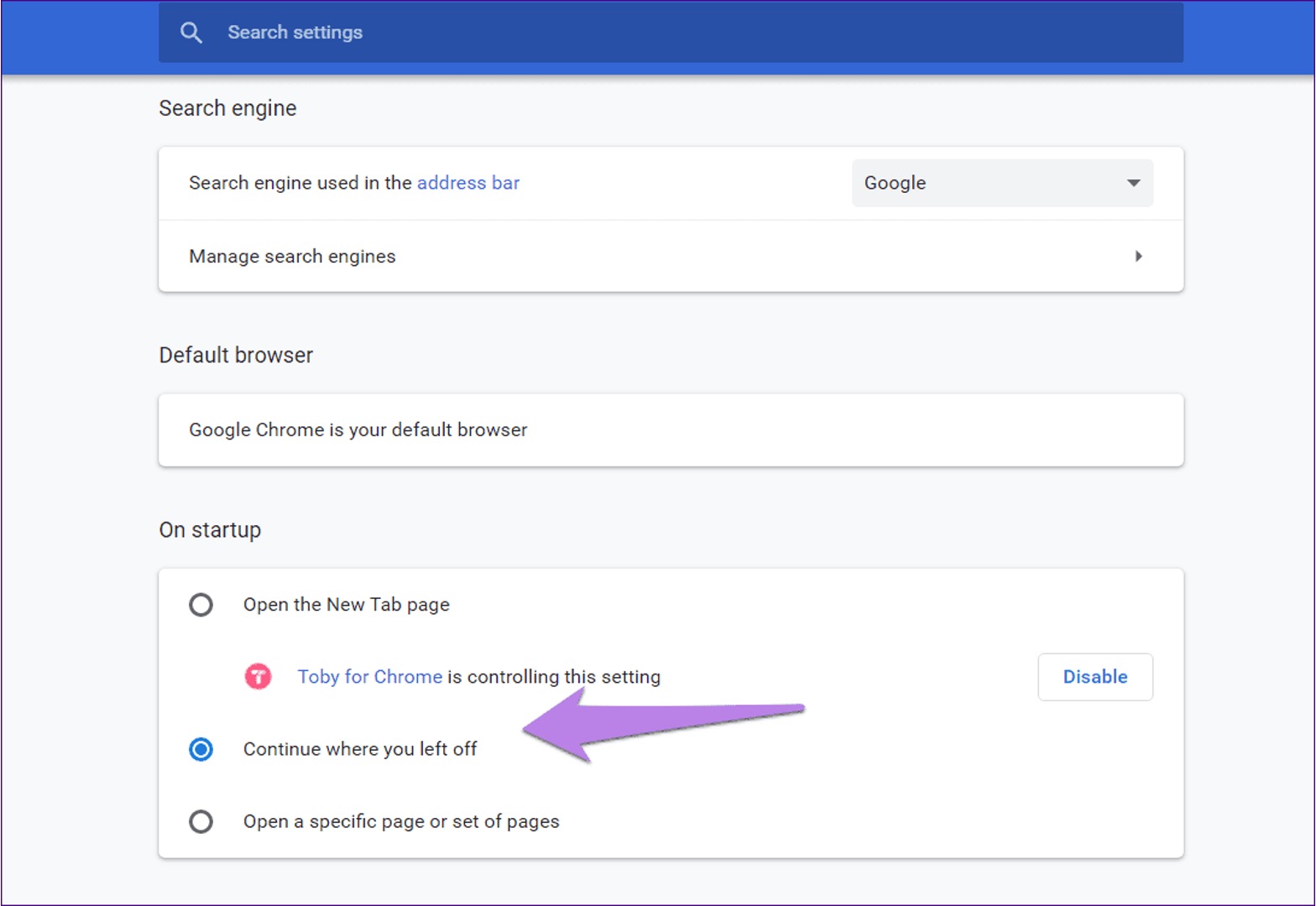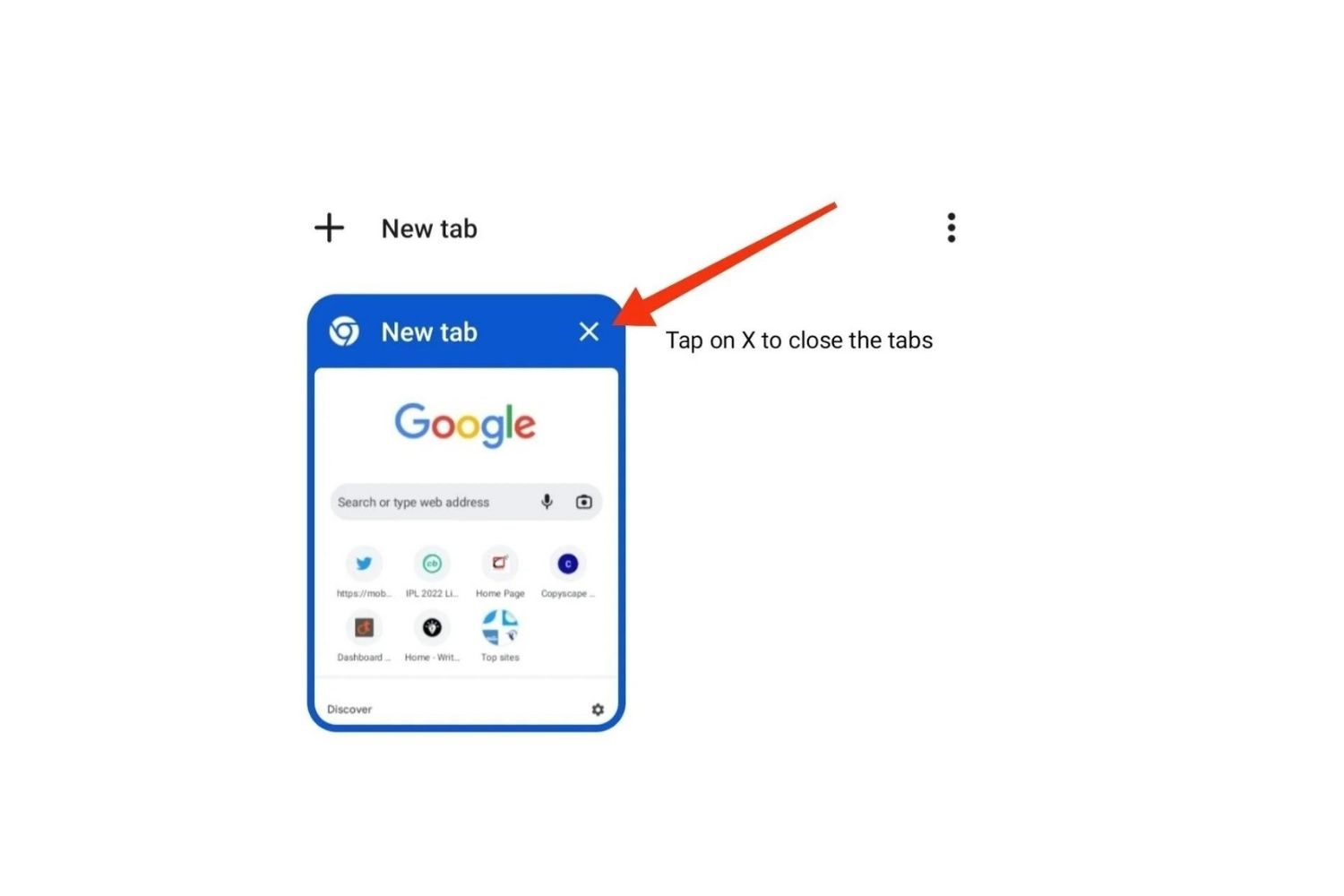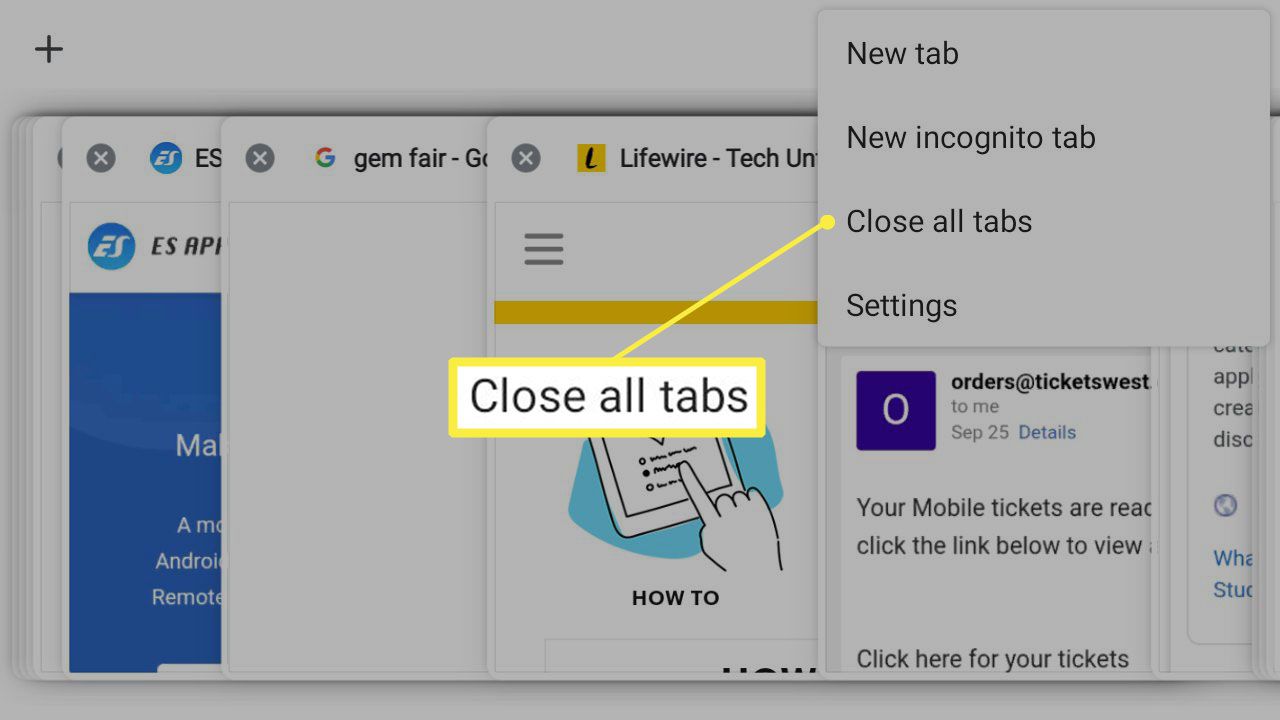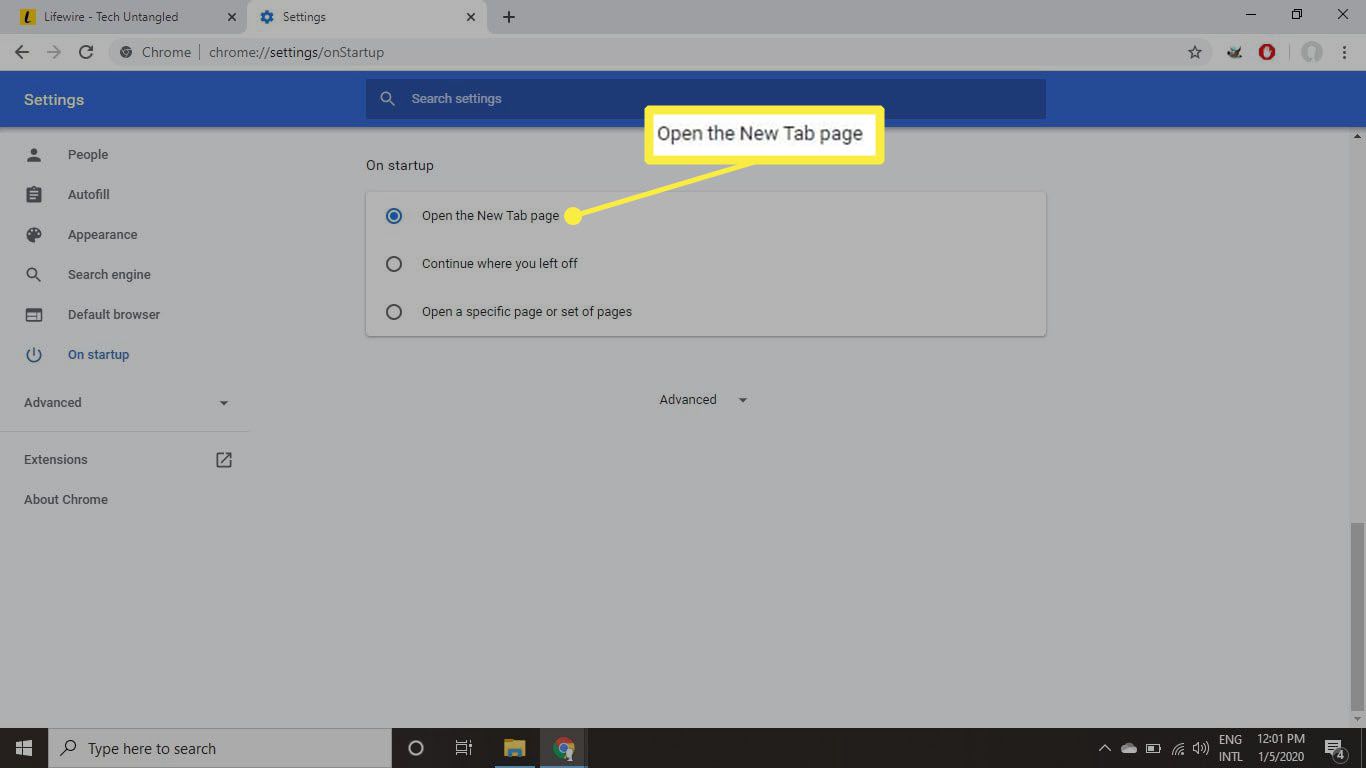Introduction
Have you ever experienced the frustration of trying to open your web browser, only to find that it's unresponsive or completely closed? It can be a perplexing and exasperating situation, especially when you're in the middle of important tasks or eagerly anticipating browsing the web. However, there's no need to panic or feel disheartened when encountering this issue. In this article, we will explore various methods to open a closed browser and get back to seamless web browsing in no time.
When a browser unexpectedly closes or refuses to open, it can disrupt your workflow and lead to a sense of inconvenience. Whether you prefer Google Chrome, Mozilla Firefox, Microsoft Edge, or any other popular browser, encountering a sudden closure can be a common occurrence. The good news is that there are several troubleshooting techniques that can help resolve this issue and restore your browsing experience.
In the following sections, we will delve into practical steps to address a closed browser situation. From clearing cache and cookies to checking for malware or adware, we will cover a range of effective strategies to tackle this issue. By following these methods, you can regain access to your favorite websites, online resources, and productivity tools without unnecessary delays.
So, if you've ever found yourself staring at an unresponsive browser window, wondering how to revive it, you're in the right place. Let's embark on this journey to uncover the solutions that will empower you to open a closed browser and resume your online activities with confidence.
Clearing Cache and Cookies
When a web browser unexpectedly closes or fails to open, one of the first troubleshooting steps is to clear the cache and cookies. These temporary files and data stored by the browser can sometimes become corrupted or outdated, leading to issues with its functionality. By clearing the cache and cookies, you can effectively refresh the browser's data and potentially resolve the problem.
To clear the cache and cookies in Google Chrome, you can start by clicking on the three-dot menu icon in the top-right corner of the browser window. From the menu, select "Settings" and then navigate to "Privacy and security." Within this section, you will find the option to clear browsing data. Here, you can choose to clear the browsing history, cookies, and cached images and files. After selecting the desired options, click on the "Clear data" button to initiate the process.
In Mozilla Firefox, clearing the cache and cookies can be accomplished by clicking on the menu button (three horizontal lines) and selecting "Options." From the left-hand navigation menu, choose "Privacy & Security" and scroll down to the "Cookies and Site Data" section. Here, you can click on the "Clear Data" button to remove the stored cookies and cached web content.
For Microsoft Edge users, clearing the cache and cookies involves clicking on the three-dot menu icon and selecting "Settings." Within the settings menu, navigate to "Privacy, search, and services" and click on "Choose what to clear" under the "Clear browsing data" section. Here, you can select the types of data to clear, including cookies and cached data, before clicking on the "Clear now" button.
By clearing the cache and cookies, you can effectively eliminate any corrupted or outdated data that may be hindering the browser's performance. This process can help in resolving issues related to unresponsive or closed browsers, allowing you to open the browser with a refreshed state and resume your web activities without interruptions.
Restarting the Browser
Restarting the browser is a fundamental yet often overlooked troubleshooting step that can effectively address issues related to a closed or unresponsive browser. When a browser unexpectedly closes or fails to open, restarting it can provide a quick and straightforward solution to the problem.
To restart the browser, begin by locating the browser window or tab that needs to be closed. If the browser is unresponsive, you can use the task manager or activity monitor to force close the browser process. Once the browser window or process is closed, you can proceed to relaunch the browser by clicking on its icon or selecting it from the applications menu.
In addition to manually restarting the browser, you can also utilize keyboard shortcuts to close and reopen the browser. For instance, in Windows environments, pressing "Ctrl + Shift + Esc" opens the task manager, allowing you to end the browser process if it's unresponsive. Subsequently, you can reopen the browser by clicking on its icon in the taskbar or desktop.
Similarly, on macOS, pressing "Command + Option + Esc" opens the force quit applications window, enabling you to close the unresponsive browser process. Following this, you can relaunch the browser by clicking on its icon in the dock or applications folder.
By restarting the browser, you effectively terminate the current browsing session and initiate a fresh instance of the browser. This can help in resolving temporary glitches, memory issues, or conflicts that may have caused the browser to close unexpectedly. Furthermore, restarting the browser allows it to reload all necessary components and extensions, potentially resolving any underlying issues that led to its closure.
In situations where a browser becomes unresponsive due to excessive memory usage or conflicting extensions, restarting the browser can provide a clean slate, allowing you to open it without encountering the previous issues. This simple yet effective troubleshooting step can swiftly restore the browser to a functional state, enabling you to resume your web browsing activities without unnecessary delays.
In essence, restarting the browser serves as a practical and efficient method to address instances of a closed or unresponsive browser, offering a quick resolution to common browsing issues. Whether you encounter a sudden browser closure or unresponsiveness, restarting the browser can often serve as the key to swiftly regain access to your favorite websites and online resources.
Updating the Browser
Ensuring that your web browser is running the latest version is crucial for optimal performance, security, and compatibility with modern web technologies. When a browser becomes outdated, it may encounter compatibility issues with certain websites, experience security vulnerabilities, or exhibit unexpected behavior, including sudden closures or unresponsiveness. Therefore, updating the browser is a fundamental step in troubleshooting and preventing such issues.
To update Google Chrome, you can access the browser's menu by clicking on the three-dot icon in the top-right corner and selecting "Help" followed by "About Google Chrome." This action triggers the browser to check for updates and automatically download and install the latest version if available. Once the update process is complete, you can relaunch the browser to ensure that it is running the most recent version.
In Mozilla Firefox, updating the browser involves clicking on the menu button (three horizontal lines) and selecting "Help," followed by "About Firefox." Similar to Chrome, Firefox will check for updates and proceed to download and install the latest version automatically. After the update is installed, restarting the browser ensures that the new version is in effect.
For Microsoft Edge users, updating the browser can be accomplished by clicking on the three-dot menu icon and selecting "Help and feedback" followed by "About Microsoft Edge." The browser will then check for updates and proceed with the installation if a newer version is available. Relaunching the browser after the update ensures that the changes take effect.
By updating the browser to the latest version, you benefit from performance improvements, bug fixes, and security patches that contribute to a more stable and secure browsing experience. Additionally, an updated browser is better equipped to handle modern web technologies and standards, ensuring seamless compatibility with a wide range of websites and online services.
In summary, keeping your browser up to date is a proactive measure to prevent unexpected closures and performance issues. By regularly updating the browser, you can ensure that it remains in optimal condition, providing a reliable platform for your web browsing activities.
Checking for Malware or Adware
When encountering a closed or unresponsive browser, it's essential to consider the possibility of malware or adware affecting its functionality. Malicious software, including viruses, trojans, and adware, can compromise the stability and security of a web browser, leading to unexpected closures, performance degradation, and intrusive pop-ups or redirects.
To check for malware or adware, it's advisable to utilize reputable antivirus and antimalware software. These specialized tools are designed to scan your system for any malicious programs or files that may be impacting the performance of your browser and overall computer operation. By running a thorough scan, you can identify and eliminate any potential threats that could be causing the browser to close unexpectedly.
In addition to dedicated security software, many modern web browsers offer built-in security features to detect and block malicious content. For instance, Google Chrome includes a feature called "Safe Browsing," which warns users about potentially harmful websites and downloads. Similarly, Mozilla Firefox incorporates enhanced tracking protection and malware scanning to safeguard users from malicious online activities.
Furthermore, it's important to exercise caution when installing browser extensions or add-ons, as these can sometimes introduce adware or unwanted software that affects the browser's behavior. By reviewing and removing any suspicious or unnecessary extensions, you can mitigate the risk of adware interfering with the browser's performance.
Regularly updating your operating system and browser to the latest versions also plays a crucial role in mitigating security risks associated with malware and adware. Software updates often include security patches that address known vulnerabilities, reducing the likelihood of malicious exploitation that could impact the browser's stability.
By proactively checking for malware or adware and implementing robust security measures, you can safeguard your browser and overall system from potential threats. This proactive approach not only helps in addressing the immediate issue of a closed or unresponsive browser but also contributes to a secure and reliable browsing experience.
In summary, checking for malware or adware is an essential step in troubleshooting a closed browser, as it addresses potential security threats that could impact the browser's performance and stability. By leveraging reputable security software, built-in browser security features, and best practices for extension management, you can effectively identify and mitigate the impact of malicious software on your browsing experience.
Reinstalling the Browser
Reinstalling the browser is a comprehensive approach to addressing persistent issues related to a closed or unresponsive browser. When other troubleshooting methods have been exhausted and the browser continues to exhibit problematic behavior, reinstalling it can provide a fresh start and resolve underlying issues that may be difficult to pinpoint.
To reinstall Google Chrome, you can begin by first uninstalling the existing browser from your system. In Windows, this can be done by accessing the "Apps & features" section in the Settings menu, locating Google Chrome, and selecting the option to uninstall. On macOS, you can simply drag the Chrome application to the Trash to initiate the uninstallation process.
Once the browser is uninstalled, you can proceed to download the latest version of Google Chrome from the official website or an authorized source. After downloading the installation file, follow the on-screen instructions to reinstall the browser on your system. Upon completion, you can launch the newly installed Chrome and configure it according to your preferences.
For Mozilla Firefox, the process of reinstalling the browser involves similar steps. Begin by uninstalling Firefox from your system using the appropriate method for your operating system. Once uninstalled, download the latest version of Firefox from the official website and proceed with the installation process. After reinstalling Firefox, you can customize its settings and preferences to align with your browsing habits.
In the case of Microsoft Edge, the browser can be reinstalled by first removing it from your system through the "Apps & features" section in Windows Settings. Following the uninstallation, you can download and install the latest version of Microsoft Edge from the official website or Microsoft Store. Once the installation is complete, you can launch the reinstalled Edge browser and configure it to suit your needs.
Reinstalling the browser provides a comprehensive solution to persistent issues that may be impacting its performance and stability. By removing the existing installation and replacing it with a fresh copy, you effectively eliminate any underlying issues that may have been difficult to resolve through conventional troubleshooting methods. Additionally, reinstalling the browser ensures that you are running the latest version, benefiting from performance improvements and bug fixes that contribute to a more reliable browsing experience.
In summary, reinstalling the browser serves as a definitive troubleshooting step to address persistent issues related to a closed or unresponsive browser. By following the appropriate uninstallation and installation procedures for your specific browser, you can effectively resolve underlying issues and regain a seamless browsing experience.

























